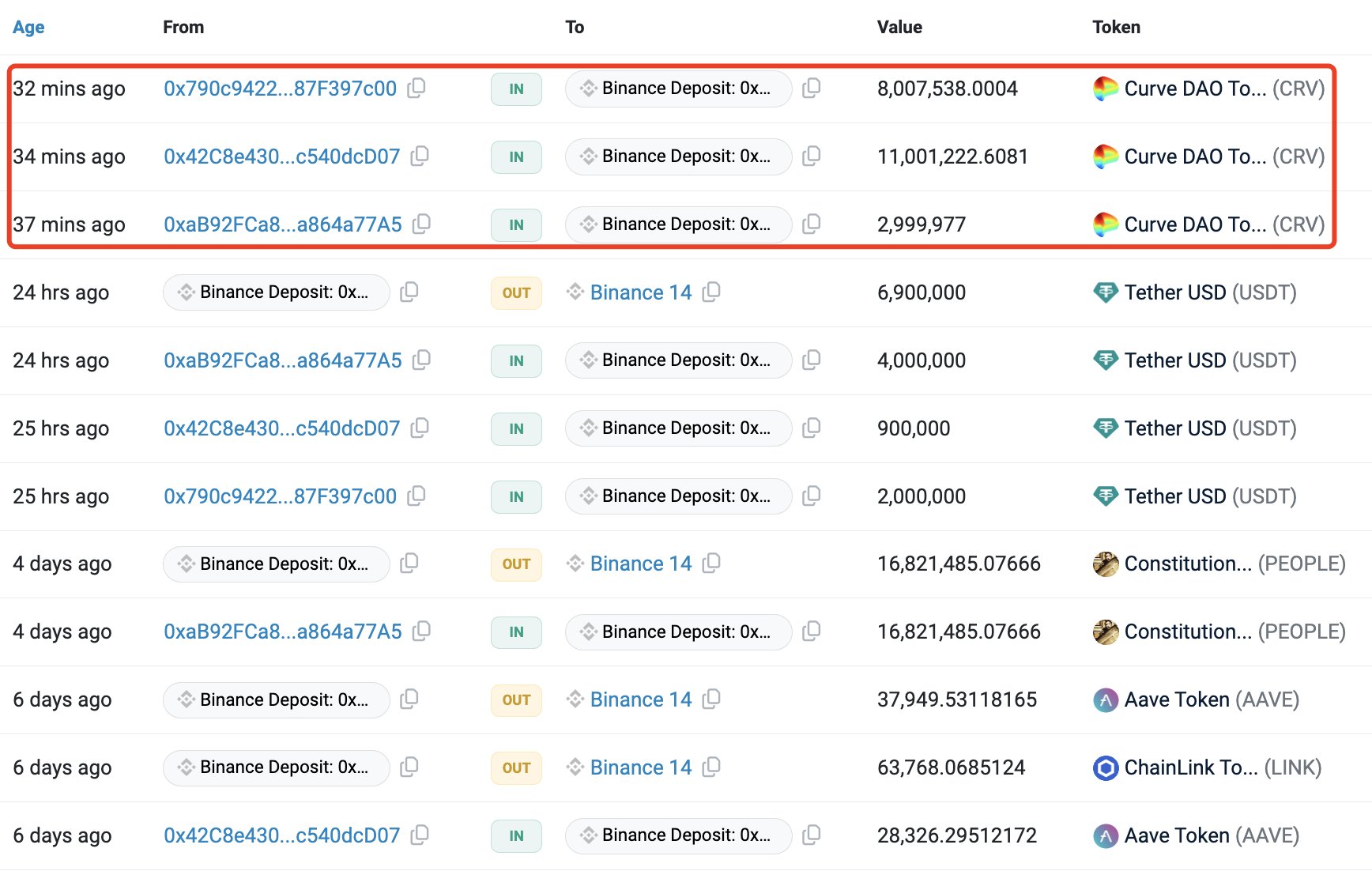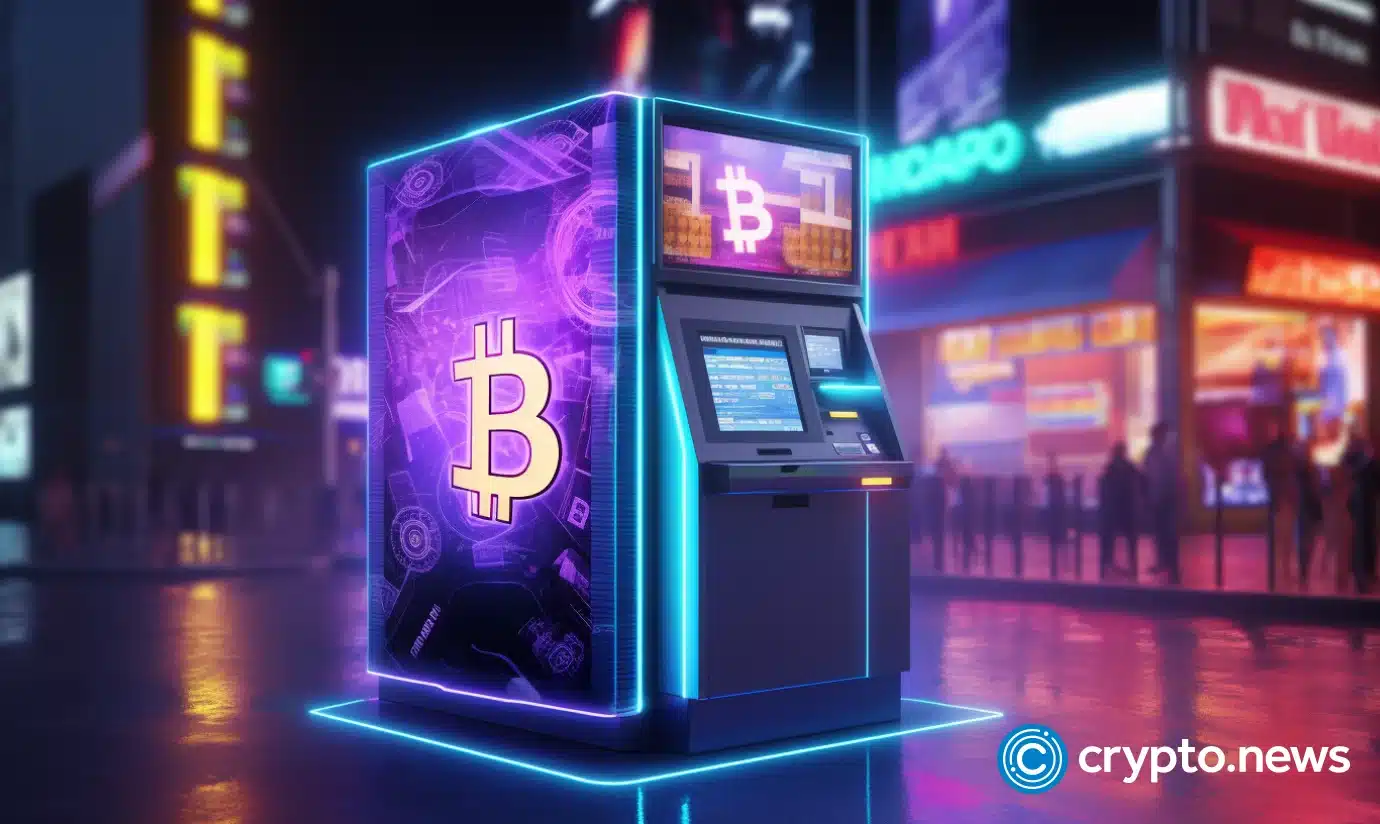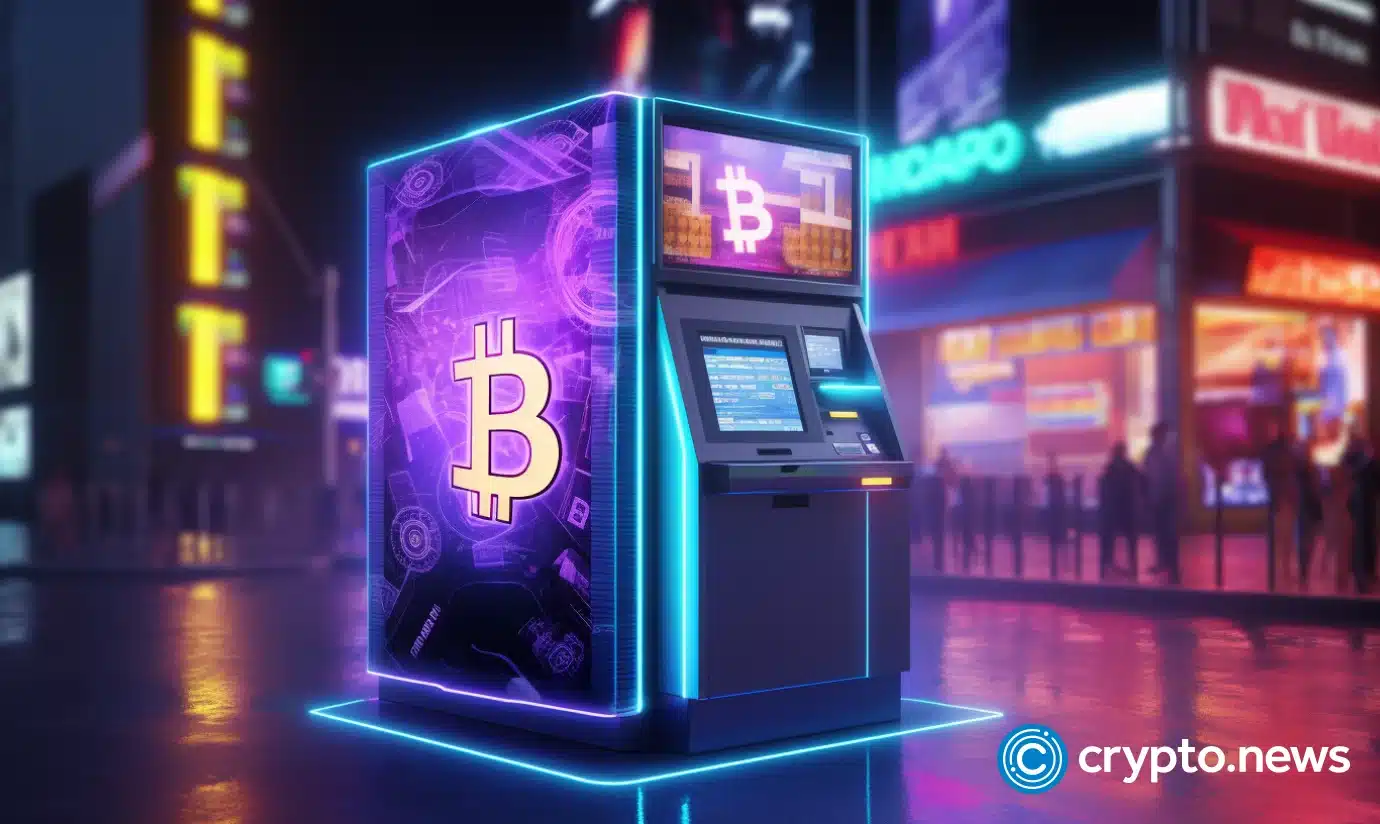News
Bitcoin Lightning Alliance To Accelerate Adoption Using New Asset Protocol
Published
6 days agoon
By
admin

A new collaborative effort spearheaded by Lightning infrastructure company LNFi intends to accelerate the adoption of the Lightning Network. Leveraging the progress of novel protocols such as Taproot Assets and Nostr, the LN Alliance hopes to mobilize industry partners and contribute to standards around the growing Bitcoin ecosystem. A recent community discussion organized by UTXO Management highlighted the group’s ambition to promote the emergence of this new Lightning-based, interoperable, financial market.
Behind this initiative, Darius from LNFi explained his motivation: “Today, the entire Lightning ecosystem is rather fragmented. There are all sorts of standards, protocols out there. The LN Alliance is just there to feature everyone and create enough exposure and awareness of existing Bitcoin, Lightning and Nostr projects on top of these standards so hopefully we can advance forward as a joint community.”
Additionally, by raising awareness around existing tools and protocols, members of the group seek to reduce duplicated efforts, allowing developers to build on what already exists rather than reinventing the wheel.
LN Link is one such standard being developed and promoted by LNFi and its partners. Built as an extension of Nostr Wallet Connect (NWC), it allows Bitcoin applications to easily interface with Taproot Assets, a protocol at the center of the LN alliance’s mission
Preparing for Taproot Asset
One of the driving forces behind this union is the emergence of Lightning Labs’ Taproot Assets. Ryan Gentry from Lightning Labs shared exciting updates on the protocol, revealing that over 150,000 mints have occurred on the protocol since its launch last October. The upcoming release promises to integrate these assets with the Lightning Network, enhancing their usability.
Taproot assets take inspiration from older concepts like Omni and Counterparty’s colored coins but are upgraded for the Taproot era. They allow for advanced scripting and off-chain data commitment within UTXOs, making them highly scalable without adding blockchain bloat. This architecture enables native composability with existing Lightning infrastructure.
“You can use all of the existing LND APIs that you’re familiar with. And all of a sudden you just have an asset ID parameter to tell the software that instead of sending Bitcoin, I want to send this Taproot asset,” said Gentry.
The goal is to make asset issuance and management on Bitcoin more efficient and user-friendly, leveraging the Lightning Network’s capabilities.
Shifting the focus to the maturing Lightning Network infrastructure, Voltage CEO Graham Krizek insisted on the importance of an accessible and reliable network, particularly with the potential integration of stablecoins. “Stablecoins on Lightning is a powerful thing that applies to a lot more people around the world than the network does today.” He emphasized that making the technology user-friendly is crucial for broader adoption.
Joltz co-founder Linden Stark shared practical steps being taken to simplify user interaction with Lightning. Joltz is implementing zero-confirmation channels and submarine swaps to facilitate instant transactions between assets and layers without the need for extensive channel management. “We think zero-conf channels will be best for the majority of users.”
Praising the ability of new Taproot assets to be seamlessly integrated and used for payments, Jordi, founder at FewSats the potential for the Lightning Network to become “a network of networks.”
Banking on Lightning interoperability
Increasingly looked at as a crucial interoperability layer, Lightning has recently established itself as the connective tissue between the supporting pieces of the broader Bitcoin ecosystem.
“I think we’re going to see a big trend over the next couple of years of Lightning swap services that are interfacing, similar to how Boltz is powering Aqua wallet. Users have funds on Liquid, and don’t have a Lightning channel at all, but can pass in and receive over the Lightning Network via a Boltz swap service.,” said Ryan Gentry from Lightning Labs.
Other participants corroborated their expectations for Lightning to become the interoperability layer connecting users and services of other supported networks. The network effects of Lightning are expected to grow as these new environments utilize it for interoperability. For instance, a swap service could manage stablecoin transfers across various platforms, simplifying the user experience.
Combining Nostr Wallet Connect and Taproot assets can improve user experiences so that users are able to transact across different asset types without worrying about the underlying complexities. “You can pay an invoice seamlessly, even if the recipient wants a different asset,” said Jordi from Fewsats. This functionality hints at an important evolution of how asset exchange might operate, reducing the reliance on centralized intermediaries.
Joltz is one company that is actively building the necessary infrastructure to support this interoperability. By developing an SDK that allows wallets to integrate with swap providers easily, Joltz aims to streamline the process of connecting various sidechains with the Lightning Network. Highlighting the efficiency gains from using Lightning as a central hub. Joltz co-founder Linden Stark remarked: “It really doesn’t make sense to integrate each sidechain individually.”
Incentivizing financial opportunities
To further the success of its initiative, LN Alliance members discussed ways to incentivize the development of this infrastructure. One of the most common ways to benefit from the Lightning Network’s economic activity is through the yield opportunities created by routing fees or channel leasing.
Jesse Shrader, founder of Amboss explained that while yields from routing payments have historically been modest, Taproot assets are expected to drive significant volume, thereby increasing the usage of scarce liquidity on the network. “We’re focused on opportunities for routing payments and leasing liquidity.” Amboss’s efforts with their Magma marketplace and Hydro liquidity management tool aim to simplify liquidity management for merchants and enhance yield returns by driving more payment volume through the network.
Noting the uneven distribution of yield from routing fees, Ryan from Lightning Labs emphasized the goal of providing equal access for all participants to earn yields by forwarding payments on the Lightning Network. “Taproot assets will introduce new services and opportunities for entrepreneurs,” Ryan noted, predicting that the increased activity from Taproot assets will benefit even those who do not directly engage with these assets.
Other speakers rallied behind the idea that the new protocol would attract many entrepreneurs to build dynamic ecosystems, particularly around stablecoins, which could eventually drive up economic activity. Supported by new markets around Taproot assets, new businesses such as swap providers or market-making activities might open new revenue streams for Lightning node operators.
The LN Alliance is yet another sign of the growth of the Lightning Network industry. After early headwinds caused by a nascent infrastructure, the introduction of Taproot Assets potentially marks the beginning of a new era of financialization using Bitcoin’s most native protocol. With increased focus on interoperability and new financial opportunities, the LN Alliance hopes to grow the economic pie and pave the way for more vibrant and efficient Bitcoin financial markets.
Source link
You may like


Binance Warns Of Delisting These Tokens, Price Drop Ahead?


Top cryptocurrencies to watch this week: MOG, KAS, FET


CurveDAO (CRV) Nears All-Time Low Following Whale Deposit to Binance: On-Chain Data


Japanese Tech Giant Sony Enters Crypto Exchange Business With This Acquisition


Bitcoin ATM installations reach 38k, below the all-time high


Mark Cuban and ChatGPT Predicts Best Pick
Altcoins
CurveDAO (CRV) Nears All-Time Low Following Whale Deposit to Binance: On-Chain Data
Published
3 hours agoon
July 1, 2024By
admin
CRV, the native token of stablecoin lending platform CurveDAO, is close to all-time lows again as the ecosystem attempts a recovery from a large liquidation event this month.
Blockchain tracking firm Lookonchain reports that a whale deposited over $6 million worth of CRV to Binance, presumably to sell at a loss.
“The 22 million CRV was bought after the CRV liquidation, with a buying price of ~$0.33.
Selling now will result in a loss of ~$1 million.”

On June 13th, Curve founder Michael Egorov announced that all of his loans, reportedly worth roughly $156 million, were liquidated. He also said that he sold millions of CRV tokens in an organized transaction to one of the partners of crypto asset investment firm NextGen Digital Venture.
“The amount of CRV liquidations was very large for the market to handle in half an hour (1/3 of circulating supply or so), so to prevent any bad debt, I sold 30 million of my not yet vested CRV to @Christianeth on June 13th . Those 30 million CRV are being received by him in chunks by mid-August.
If you see CRV transactions from my wallet to christian2022.eth, they are related to that deal…”
On the same day of Egorov’s liquidation, CRV dropped to an all-time low of $0.239. Currently, CRV is trading at $0.28 and is now 98.3% down from its all-time high of $15.37.
Don’t Miss a Beat – Subscribe to get email alerts delivered directly to your inbox
Check Price Action
Follow us on X, Facebook and Telegram
Surf The Daily Hodl Mix
 

Disclaimer: Opinions expressed at The Daily Hodl are not investment advice. Investors should do their due diligence before making any high-risk investments in Bitcoin, cryptocurrency or digital assets. Please be advised that your transfers and trades are at your own risk, and any losses you may incur are your responsibility. The Daily Hodl does not recommend the buying or selling of any cryptocurrencies or digital assets, nor is The Daily Hodl an investment advisor. Please note that The Daily Hodl participates in affiliate marketing.
Generated Image: Midjourney
Source link
Bitcoin
Bitcoin ATM installations reach 38k, below the all-time high
Published
5 hours agoon
July 1, 2024By
admin

The global Bitcoin ATM market has seen significant growth. There are now over 38,000 Bitcoin ATMs worldwide, up from just over 10,000 in October 2020 and down by 2,000 from its all-time high (ATH) of nearly 40,000 in December 2022.
According to data available on Coin ATM Radar, the global tally of installed Bitcoin ATMs stands at 38,279 as of the latest count.
This expansion is driven by factors such as accessibility and ease of use, profitability for operators who earn transaction fees above the Bitcoin spot price, and favorable regulatory environments in many countries that support setup and expansion.
Additionally, Bitcoin ATMs provide enhanced privacy and security, allowing users to transact without divulging personal information and enabling direct deposits into digital wallets.
Despite their advantages, the industry faces challenges. Many operators lack the necessary experience, financial backing, or business acumen required for success, compounded by regulatory uncertainties in certain regions.
To address these issues, industry leaders emphasize the importance of public education on the benefits of cryptocurrencies and the need for reliable customer support. Building greater understanding and trust among users could encourage broader adoption of Bitcoin ATMs and digital assets.
As demand grows for convenient and secure cryptocurrency transactions, the Bitcoin ATM market is poised for further expansion. Strategic approaches and supportive regulatory frameworks could propel this industry into a pivotal role in the global adoption of digital assets.
Bitcoin holds steady at $60k
Bitcoin’s (BTC) price trajectory in 2024 has been marked by significant volatility and a bullish momentum. March saw Bitcoin achieving a new all-time high, surpassing $69,000 and briefly touching $73,000 before undergoing a correction.
This surge was driven by pivotal events this year: regulators approved the first spot Bitcoin ETFs in January, and April’s halving event reduced the block reward from 6.25 BTC to 3.125 BTC.
Experts anticipate a new growth cycle in the crypto market, potentially peaking between 2024 and 2025, in line with the four-year market cycle theory.
However, external factors such as global developments and regulatory changes could also influence Bitcoin’s price trajectory. Despite ongoing scrutiny of Bitcoin’s long-term prospects, its historical resilience suggests the possibility of a rebound.
Analysts maintain optimism regarding Bitcoin’s future price movements, with some forecasting it could surpass $80,000 in the coming years.
Over the past 60 days, the Bitcoin price has risen by 7.3%, climbing from approximately $57,000 to its current level of $61,532.
Source link
consenSys
SEC Sues Consensys Over MetaMask Staking, Broker Allegations
Published
11 hours agoon
June 30, 2024By
admin

“Since at least January 2023, Consensys has offered and sold tens of thousands of unregistered securities on behalf of liquid staking program providers Lido and Rocket Pool, who create and issue liquid staking tokens (called stETH and rETH) in exchange for staked assets,” the SEC said. “While staked tokens are generally locked up and cannot be traded or used while they are staked, liquid staking tokens, as the name implies, can be bought and sold freely.”
Source link

Binance Warns Of Delisting These Tokens, Price Drop Ahead?

Top cryptocurrencies to watch this week: MOG, KAS, FET

CurveDAO (CRV) Nears All-Time Low Following Whale Deposit to Binance: On-Chain Data

Japanese Tech Giant Sony Enters Crypto Exchange Business With This Acquisition

Bitcoin ATM installations reach 38k, below the all-time high

Mark Cuban and ChatGPT Predicts Best Pick

This Week in Crypto Games: Dr. Disrespect Dumped, Pixelverse and Catizen Tokens, Notcoin ‘Fresh Start’

June sales drop 47% but there are more buyers and sellers

Toncoin Whales Just Started Buying This Coin; Is $10 Next?

SEC Sues Consensys Over MetaMask Staking, Broker Allegations

Cryptocurrency after the European Union’s MiCA regulation

Charles Hoskinson Flags Major Ongoing AI Censorship Trend

Catch up on Render and BNB price spike; enhance wallets with top analyst pick
Bitcoin Remains Bullish As New BTC Addresses Surge To New 2-Month Highs

XRP Price May Soar Past $6, Here’s Why

Bitcoin Dropped Below 2017 All-Time-High but Could Sellers be Getting Exhausted? – Blockchain News, Opinion, TV and Jobs

What does the Coinbase Premium Gap Tell us about Investor Activity? – Blockchain News, Opinion, TV and Jobs
BNM DAO Token Airdrop
A String of 200 ‘Sleeping Bitcoins’ From 2010 Worth $4.27 Million Moved on Friday

NFT Sector Keeps Developing – Number of Unique Ethereum NFT Traders Surged 276% in 2022 – Blockchain News, Opinion, TV and Jobs
New Minting Services

Block News Media Live Stream

SEC’s Chairman Gensler Takes Aggressive Stance on Tokens – Blockchain News, Opinion, TV and Jobs

Friends or Enemies? – Blockchain News, Opinion, TV and Jobs

Enjoy frictionless crypto purchases with Apple Pay and Google Pay | by Jim | @blockchain | Jun, 2022

Block News Media Live Stream

How Web3 can prevent Hollywood strikes

Block News Media Live Stream

XRP Explodes With 1,300% Surge In Trading Volume As crypto Exchanges Jump On Board

Block News Media Live Stream
Trending

 Altcoins2 years ago
Altcoins2 years agoBitcoin Dropped Below 2017 All-Time-High but Could Sellers be Getting Exhausted? – Blockchain News, Opinion, TV and Jobs

 Binance2 years ago
Binance2 years agoWhat does the Coinbase Premium Gap Tell us about Investor Activity? – Blockchain News, Opinion, TV and Jobs
- Uncategorized3 years ago
BNM DAO Token Airdrop

 Bitcoin miners2 years ago
Bitcoin miners2 years agoA String of 200 ‘Sleeping Bitcoins’ From 2010 Worth $4.27 Million Moved on Friday

 BTC1 year ago
BTC1 year agoNFT Sector Keeps Developing – Number of Unique Ethereum NFT Traders Surged 276% in 2022 – Blockchain News, Opinion, TV and Jobs
- Uncategorized3 years ago
New Minting Services

 Video2 years ago
Video2 years agoBlock News Media Live Stream

 Bitcoin1 year ago
Bitcoin1 year agoSEC’s Chairman Gensler Takes Aggressive Stance on Tokens – Blockchain News, Opinion, TV and Jobs

